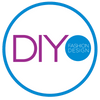Demystifying Sewing Machine Needle Sizes for Different Fabrics
Choosing the correct sewing machine needle size for your fabric is crucial for achieving the best sewing results. Every fabric has unique characteristics, which can greatly influence the selection of needle size.
In this blog post, we will explore the various sewing machine needle sizes and their suitability for different fabric types. By understanding the relationship between needle sizes and fabric properties, you'll be able to create professional-looking garments and crafts with ease.
1. The Basics of Sewing Machine Needle Sizes
Sewing machine needle size is denoted by a number, ranging from 70 to 110, with 70 being the finest and 110 being the heaviest. The general rule is that the thinner and lighter the fabric, the smaller the needle size should be. Similarly, thicker and heavier fabrics require larger needle sizes.
2. Needle Size Guidelines for Lightweight Fabrics
For lightweight fabrics such as delicate silks, chiffons, and organzas, it is recommended to use needle sizes 70. These finer needles help prevent damage to delicate fibers and minimize visible needle marks or holes. When working with lightweight fabrics, it's also important to choose a needle with a sharp or microtex tip to ensure clean and precise stitching.
3. Needle Size Recommendations for Medium-Weight Fabrics
Medium-weight fabrics like cotton, linen, twill, and flannel typically require needle sizes between 80 and 90. The choice of needle tip depends on the specific fabric texture, with universal or ballpoint needles being suitable for most medium-weight fabrics.
4. Needle Size Considerations for Heavyweight Fabrics
When working with heavyweight fabrics, including denim or canvas might require needle sizes at the higher end of the range such as the 100 or 110, and leather is best sewn with a needle with an extra sharp point for better penetration. These large needle sizes can accommodate the thickness and density of heavier fabrics without damaging the needle or fabric and reduce the risk of skipped stitches or broken needles.
Demystifying Sewing Machine Needle Sizes
Understanding the correlation between sewing machine needle sizes and fabric types is essential for achieving professional and durable stitching. Choosing the correct needle size ensures that the needle penetrates the fabric properly without causing damage or visible holes.
Remember, there may be exceptions to these guidelines, especially when working with specialty fabrics or complex projects. Experimentation and testing are key to finding the perfect needle size for your unique sewing project.
By selecting the right needle for your fabric, you'll be able to create professional-quality garments with ease and precision.
Continue to follow DIY Fashion to gain insights on fashion icons, sewing patterns, industry trends, and much more!
